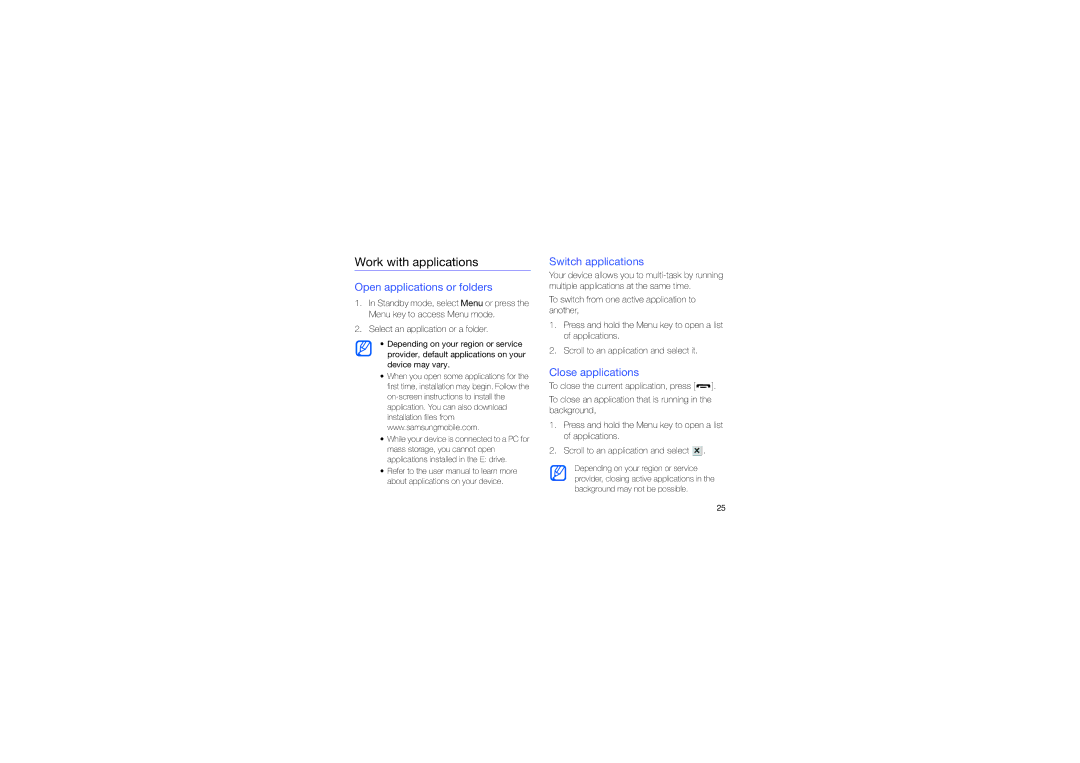GT-I8910BVDXEV, GT-I8910TSBXEV, GT-I8910DKBXEV, GT-I8910DKDXEV, GT-I8910BVBXEV specifications
The Samsung GT-I8910 series comprises a range of smartphones that showcases the company’s dedication to innovation and cutting-edge technology. Released during a time when mobile technology was rapidly evolving, these models, which include the GT-I8910DKAXEV, GT-I8910TSAXEV, GT-I8910BVAXEV, GT-I8910BVBXEV, and GT-I8910DKDXEV, were particularly noteworthy for their dynamic features and enhancements.At the heart of the GT-I8910 series lies a powerful ARM Cortex A8 processor, ensuring smooth performance for multitasking and demanding applications. With a stunning 3.7-inch Super AMOLED display, these devices delivered vibrant colors, deep blacks, and excellent visibility even in bright sunlight. This was a significant leap forward in display technology, providing users with an immersive viewing experience for media consumption and gaming.
One of the standout features of the GT-I8910 series is its camera capabilities, which include an impressive 8-megapixel rear camera with autofocus and LED flash. This camera not only offered high-quality photos but also provided the ability to record HD video, catering to the rising demand for mobile photography. The inclusion of features such as geo-tagging and face detection further enhanced the photography experience.
The devices ran on the Samsung TouchWiz user interface layered on top of the Symbian operating system, which allowed for a user-friendly and customizable experience. Additionally, the integration of Samsung's own apps added value, providing tools for productivity and entertainment.
Connectivity options were robust, featuring 3G support, Wi-Fi, GPS, and Bluetooth, ensuring that users remained connected to the internet and their social networks at all times. Furthermore, the inclusion of expandable storage via microSD cards meant that users could store vast amounts of media and applications without worry.
Battery life was an essential consideration for these devices, and Samsung equipped them with capable batteries that offered strong performance throughout the day, even with heavy usage. Environmental considerations were also at play, with models featuring recyclable components, aligning with a growing consumer emphasis on sustainability.
In summary, the Samsung GT-I8910 series, including models like the GT-I8910DKAXEV, GT-I8910TSAXEV, GT-I8910BVAXEV, GT-I8910BVBXEV, and GT-I8910DKDXEV, showcased a remarkable synthesis of features, technology, and design. With their powerful processors, stunning displays, advanced camera systems, and wide-ranging connectivity options, these smartphones set a benchmark for future devices in the ever-evolving mobile landscape.

